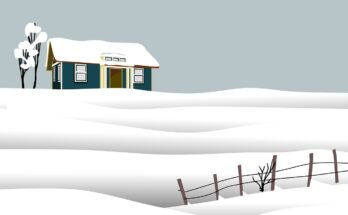Home insurance is like a warm blanket on a chilly night – it wraps you in comfort and provides a sense of security. But why is it so important? Home insurance protects one of your most valuable assets, ensuring that if something goes wrong, you won’t be left in a financial lurch. Let’s dive into the world of home insurance, understand its nuances, and learn how to choose the best policy for your needs.
Understanding Home Insurance
What is Home Insurance?
At its core, home insurance is a policy that provides financial protection against losses and damages to your home and belongings. It also offers liability coverage against accidents in the home or on the property.
Types of Home Insurance Policies
There are several types of home insurance policies, each catering to different needs. The most common include:
- HO-1: Basic Policy, covering ten named perils.
- HO-2: Broad Policy, covering more named perils.
- HO-3: Special Policy, the most popular, covering all perils except those specifically excluded.
- HO-4: Renter’s Insurance, for those renting homes.
- HO-5: Comprehensive Policy, covering more perils than HO-3.
- HO-6: Condo Insurance, for condominium owners.
- HO-7: Mobile Home Insurance, for mobile or manufactured homes.
- HO-8: Older Home Insurance, for homes that don’t meet insurer standards.
Coverage Options
Basic Coverage
Basic home insurance typically covers:
- Dwelling Coverage: Protects the structure of your home.
- Personal Property Coverage: Covers your belongings.
- Liability Protection: Protects against legal liability for injuries or property damage.
- Additional Living Expenses: Covers costs if you need to live elsewhere due to home repairs.
Additional Coverage
You can enhance your basic policy with additional coverage options, such as:
- Flood Insurance: Covers flood damage, usually not included in standard policies.
- Earthquake Insurance: Covers damage from earthquakes.
- Umbrella Insurance: Provides additional liability coverage.
Exclusions in Home Insurance
Understanding what isn’t covered is crucial. Common exclusions include:
- Flood damage (unless you have flood insurance)
- Earthquake damage (unless you have earthquake insurance)
- Wear and tear or maintenance issues
- Intentional damage
Factors Influencing Home Insurance Rates
Several factors influence your home insurance premiums, including:
Location
The area where your home is located can significantly impact your rates. Homes in areas prone to natural disasters, high crime rates, or with higher rebuilding costs may have higher premiums.
Home Value and Construction
The value of your home and its construction type also play a role. More expensive homes and those built with high-cost materials typically cost more to insure.
Personal Factors
Your credit score, claims history, and even your marital status can affect your rates. Insurers often view individuals with good credit and no claims history as lower risk.
How to Choose the Right Home Insurance Policy
Assessing Your Needs
Start by evaluating what you need in a home insurance policy. Consider the value of your home and belongings, and any specific risks in your area.
Comparing Policies
Shop around and compare policies from different insurers. Look at coverage options, limits, and exclusions to find the best fit.
Reading the Fine Print
Always read the fine print of your policy. Make sure you understand what is covered, what isn’t, and any conditions or exclusions.
Benefits of Home Insurance
Financial Protection
Home insurance provides a financial safety net in case of damage or loss. It ensures you won’t have to pay out of pocket for repairs or replacements.
Liability Coverage
Liability coverage protects you if someone is injured on your property or if you accidentally damage someone else’s property.
Peace of Mind
Knowing you have coverage gives you peace of mind. You can rest easy knowing you’re protected against unexpected events.
Common Myths about Home Insurance
Myth 1: Home Insurance Covers Everything
Many people think home insurance covers all types of damage, but this isn’t true. Standard policies often exclude flood and earthquake damage.
Myth 2: Home Insurance is Too Expensive
While it’s true that home insurance can be costly, the financial protection it provides is often worth the investment. Plus, there are ways to lower your premiums.
Myth 3: Renting Doesn’t Require Insurance
Even if you’re renting, you still need insurance. Renter’s insurance protects your belongings and provides liability coverage.
Steps to Filing a Home Insurance Claim
Initial Steps After Damage
First, ensure everyone’s safety and prevent further damage if possible. Then, contact your insurer to report the damage.
Documentation and Evidence
Take photos and videos of the damage. Keep records of any repairs or expenses related to the damage.
Working with Your Insurance Adjuster
Your insurer will send an adjuster to assess the damage. Work with them and provide any necessary documentation to support your claim.
Tips to Lower Home Insurance Premiums
Increasing Deductibles
Raising your deductible can lower your premiums. Just make sure you can afford the higher out-of-pocket cost if you need to file a claim.
Bundling Insurance Policies
Many insurers offer discounts if you bundle home insurance with other policies, like auto insurance.
Installing Safety Features
Installing smoke detectors, security systems, and other safety features can reduce your premiums.
Impact of Natural Disasters on Home Insurance
Coverage for Natural Disasters
Standard policies typically cover some natural disasters, but not all. For example, flood and earthquake coverage usually require separate policies.
Preparing for Natural Disasters
Take steps to protect your home from natural disasters. This can include reinforcing structures and creating an emergency plan.


